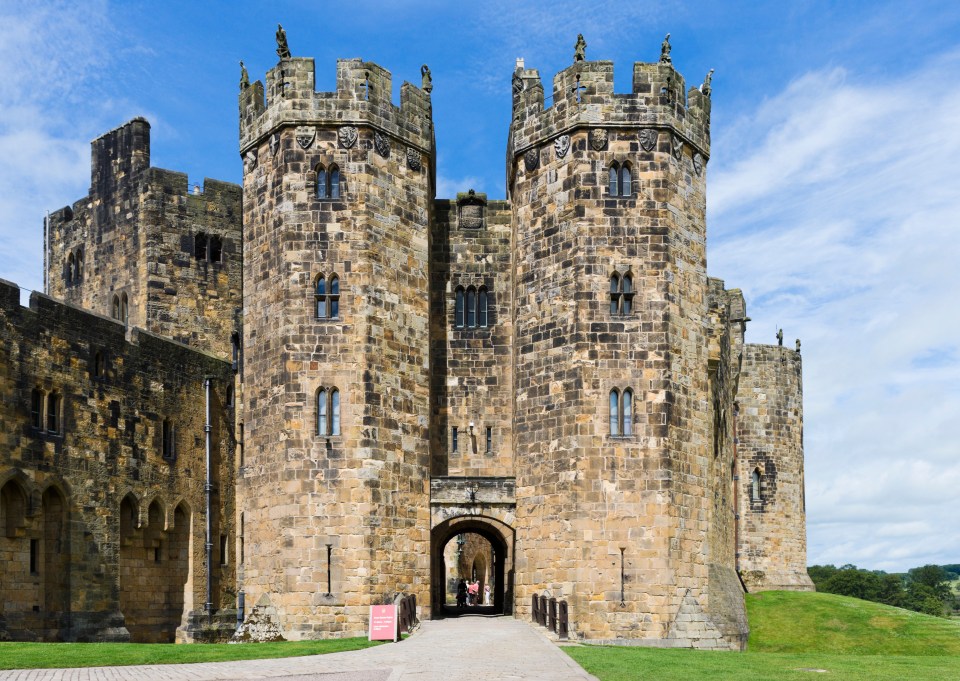CHERRY tree fans are bound to fall in love with this Medieval English town home to the world’s largest orchard.
As Sakura season blossoms, more than 350,000 tourists flock to one historic UK destination, located in the North East, each year.
Alnwick’s world-famous gardens is home to a bountiful 328-strong cherry orchard.
The Northumberland castle’s display gives those of Mount Fuji and Tokyo, Japan, a run for their money.
For a brief moment in time, the gardens are washed with a sea of white as the dainty cherry tree leaves unravel.
The orchard’s type of Taihaku cherry tree, named Great White, is renowned for its snow-coloured flowers that can grow up to 6cm in width.
In the autumnal season, the leaves transform into a rich hue of burnt copper.
What many visitors may not realise is the strange history behind Taihuka cherry trees, which had sadly become extinct in Japan.
They were reintroduced by a fellow called Captain Collingwood Ingram.
He spotted the species in a Sussex garden, which had previously been imported from Japan.
Ingram decided to take the tree back to Japan, and to this day every Taihuka cherry tree in the world is related to the one from that Sussex garden.
And admiring cherry trees actually has it’s own term which stems from a Japanese tradition called Hanami.
The best way to do this is to gather friends or family and (if it’s allowed) have a picnic under the cream-coloured cherry branches.
Part of the cherry tree’s appeal is that they only blossom for up to two weeks, making their presence short and sweet.
The optimum time to capture their beauty is during the end of April and the beginning of May – although this time differs depending on the weather.
Alnwick Garden’s has their own live webcam which covers to trees so people can witness the blossoms from home.
It’s also worth keeping an eye on their social media as they make an official announcement when the flowers reach full bloom.
ALNWICK GARDEN HISTORY
The Alnwick Garden was made in the 1750s and redeveloped a century later.
But after the Second World War, the beauty spot fell into disrepair.
In 1996 the Duchess of Northumberland Jane Percy saw potential in the abandoned grounds and kick-started its re-birth.
In 2001, the 12-acre plot was opened to the public and over time the cherry orchard was planted.
During Easter, entrance to The Alnwick Garden starts from £16.50 and is free for up to 4 children (per adult).
From April 15, tickets cost £18.50 for adults and are still free for up to 4 children (per adult).
There are plenty of other things to appreciate about the garden.
The infamous Poison Garden contains some of the world’s most toxic plants.
Visit at your own risk as guests have occasionally been known to faint while walking around the plot.
As a warning, you cannot smell, touch or taste any of the plants.
The Alnwick Garden’s Grand Cascade is a magnificent fountain that stretches across the park and it is also worth visiting the otherworldly bamboo labyrinth.
ALNWICK ACTIVITIES
Alnwick has much more to offer alongside the record-breaking spring blossoms.
The small Northumberland market town has quaint cobbled streets and historical landmarks.
Alnwick Castle – a monolithic 11th-century building – is also famous for being the set of Harry Potter and Downton Abbey.
Originally built to protect the border, the castle now offers tours and events.
Children can even attend Broomstick training sessions where Harry took his first flying lesson in the film Harry Potter and the Philosopher’s Stone.
The cherry tree orchard is also not the only world record-breaker in Alnwick.
Beside The Alwnick Garden is the world’s largest wooden tree house.
Held up by 16 trees this unique build has been the host of numerous weddings and events.
One particular highlight is the magical Tree House Restaurant, which offers cosy £20 two-course meals with stellar views.
Best SEVEN UK places to see cherry trees
According to The Times
- Doddington Hall, Lincolnshire
- Royal Botanic Gardens, Kew, London
- Keele University, Staffordshire
- Barfield Farm, Offham, Kent
- The Stray, Harrogate, North Yorkshire
- Edinburgh
- National Botanic Garden of Wales, Llanarthne, Carmarthenshire
READ SOURCE


















